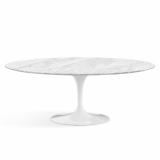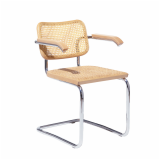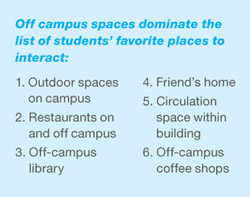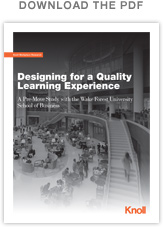
Design for a Quality Learning Experience
In the highly competitive world of higher education, institutions frequently make substantial investments in campus facilities to attract and retain the best and the brightest students, faculty and staff; accommodate growing enrollments; and change to support a wider variety of teaching and learning styles. These investments are made with the belief that they will foster an ideal learning experience. Yet, despite extensive sums spent on buildings and interior space, there is little concrete evidence that the investments actually helped to achieve the goals.
To better understand the link between design and these types of outcomes, Knoll conducted a two-phase research program with the Wake Forest University School of Business. At the start of this research, students were scattered among three separate buildings. The school was in the process of constructing the new Farrell Hall, and consolidating both its undergraduate and graduate schools of business into this well-appointed facility.
“We want to create a physical structure that united the undergraduate and graduate business schools under a single roof. In doing so, we aspire to create a world class space that resembles that marketplace in which students will work once they leave Wake Forest. In addition, we hope Farrell Hall draws top students for each of our programs, provides them a physical space to achieve maximum success while here, and afford them a venue to showcase their abilities for future employers.”
—David Clark, Chief Administrative and Student Services Officer, School of Business
The purpose of this two phase research project was:
About the Wake Forest University School of Business
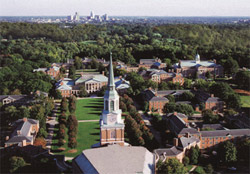
The Wake Forest University School of Business in Winston-Salem, N.C., is consistently ranked among the world’s best graduate business schools. The School now houses both graduate and undergraduate programs in the new Farrell Hall facility on the main Wake Forest campus. The School of Business offers six masters programs and four joint degree programs, including full-time and part-time Master of Business Administration, Master of Science in Accountancy and Master of Arts in Management. The School also offers a Bachelor of Science (BS) degree program for undergraduates.
Phase 1: Prior to the move
Before the move, identify the qualities of the physical environment that positively influence students’ learning and campus experience, and feed that information into the process of interior design and selecting furnishings.
Phase 2: After the move
Compare assessments of interior space, furnishings and technology before and after the move to Farrell Hall, to reveal their impact on outcome measures such as academic performance and retention.
This paper reports our insights from the first phase of the study. From the analysis, we identified the key spatial, furnishing and technology elements linked to various measures of the student learning experience. The insights we gained were used to guide the planning and furnishing of spaces and amenities in the new building.
Three Research Insights Demonstrate the Connection between Design Investments and Improved Student Learning Experience
This study confirms that qualities of the indoor environment significantly impact students’ preferences and satisfaction with their learning and campus experience, as well as influence their decision on attending the school. Based on this research, we offer broad recommendations for all higher education institutions that will enhance student satisfaction with their learning experience.
Research Insight 1: Greater Variety of Spaces Improves Quality of Study and Socializing
Students confirm what designers and planners have known for some time: a variety of spaces are needed for both individual and group activities; and formal and informal learning; and meeting and socializing. While the original building did provide a selection of spaces — classrooms, circulation areas, computer labs, library, study rooms, interview rooms and work spaces — the analyses showed that greater choice and variety of spaces predicted higher ratings of quality of study, and satisfaction with ability to socialize.
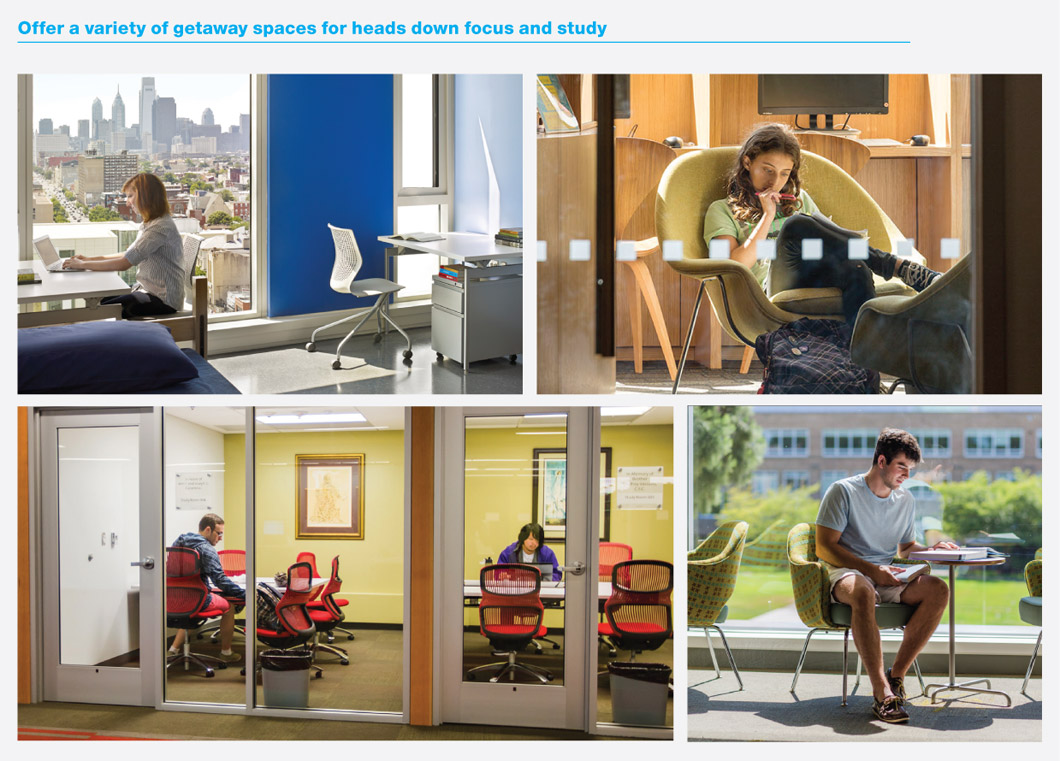
Figure 1. A diverse array of spaces should be available to support individual and small group study and social interactions. These spaces may be outfitted with video display, wall-mounted whiteboard surface and moveable furniture or table and chair.
“If we had places to socialize and study outside it would be ideal if the weather is nice. I like the sunshine and people watching. Then I can eat or talk on the phone if I need to—and it won’t bother those around me”.
—Graduate student
Design Recommendation: Increase the Variety of Alternative Spaces
Students’ clear need to choose from a variety of alternative spaces suggests the importance of developing varied sizes and types of indoor (and outdoor) spaces for learning. Within the building, a diversity of spaces should be provided that can easily accommodate congregating, meeting, socializing and learning at any time of the day or night (Figure 1). All spaces should provide connection to power and data. Design of spaces should echo the casual nature of comfortable offcampus environments students prefer, such as cafés, restaurants and homes.
“The current outdoor spaces are adequate for graduate students, but undergraduates do not have dedicated spaces that are part of the School of Business. As we look towards our next space and consider the limitations of existing indoor study spaces, coupled with the great weather we have here 9 months a year, we certainly will have an eye towards creating desirable outdoor spaces for study and social uses.”
—David Clark, Chief Administrative and Student Services Offi cer, School of Business
Research Insight 2: Elements of Adaptability Enhance Student Satisfaction with Space
The degree to which furniture layouts, lighting and noise levels can be adapted, predicted greater student satisfaction with the particular space (classroom, study area or congregate space).
Design Recommendation: Offer Adaptable Furnishings that Provide Flexibility within Learning Environments
Student satisfaction with specific spaces in higher education facilities is connected to whether they can manipulate furnishings within the space to suit their learning needs. Learning and meeting spaces should have flexible furnishings that allow the students to reconfigure spaces themselves easily and quickly for various styles of learning and interactions (Figure 2). Lightweight, mobile chairs and tables allow users to reconfigure their own space quickly and easily. Lecture-style rows for large groups can transition into various shapes—U-shape, rectangle, trapezoid, circle—for smaller group activities. Design elements can ease the transition from one configuration to another, such as carpet patterns that serve as “guidelines” for furniture placement.
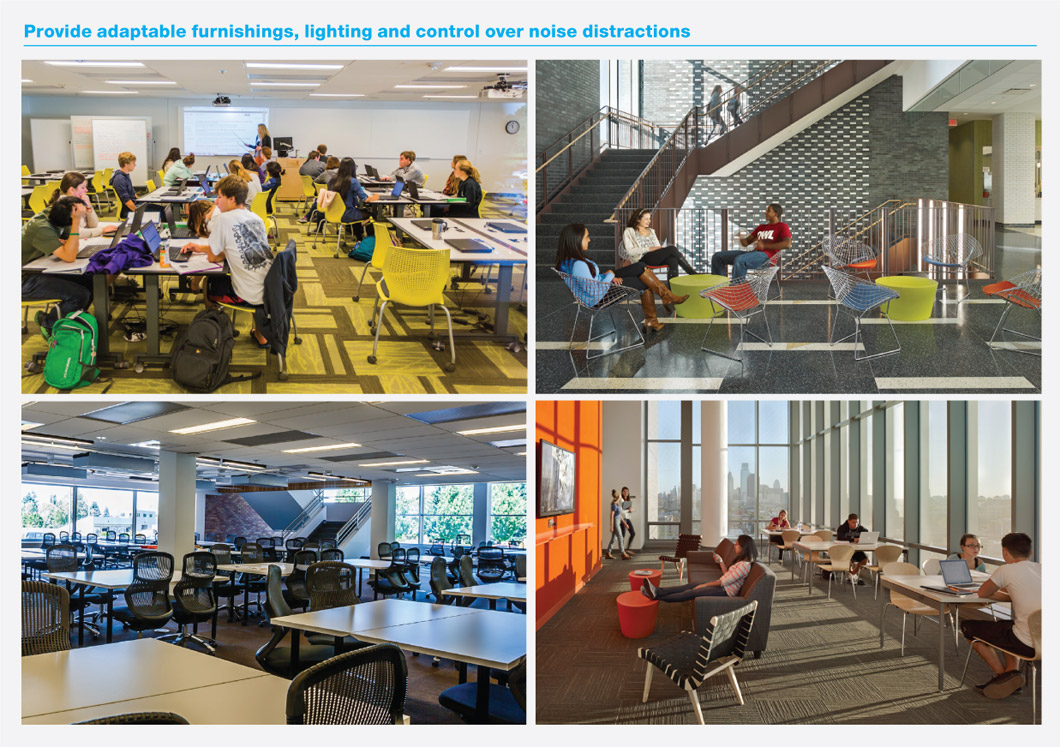
Figure 2. Spaces should offer furnishings which can be easily rearranged for different learning situations or study needs. Spaces should provide ways of increasing enclosure for noise reduction and different types of lighting sources that can be manipulated to support the activity at hand.
Research Insight 3: Function, Legibility, Brand and Aesthetics Drive Student Decision to Attend the School
The analyses showed that several aspects of the physical environment affect students’ overall satisfaction with the higher education institution and their decision to attend the school. In order of importance, these elements include:
1. Legibility of layout and functionality of spaces, including access to technology and ease of way finding
2. Aesthetics and “feel” of spaces, encompassing healthy air and comfortable noise level
3. Well-lit spaces with access to natural daylight and views outdoors
4. Design features that reflect the school’s mission and goals

Figure 3. The space should be planned for ease of way finding, with clear views to landmarks within the space, and to the outside. Consider organizing the plan around a major functional area such as a café. The spaces for learning, study and social interaction should be easy to locate, and their intention for use should be obvious–not ambiguous. Finally, connection to technology should be a part of the very fabric of all spaces.
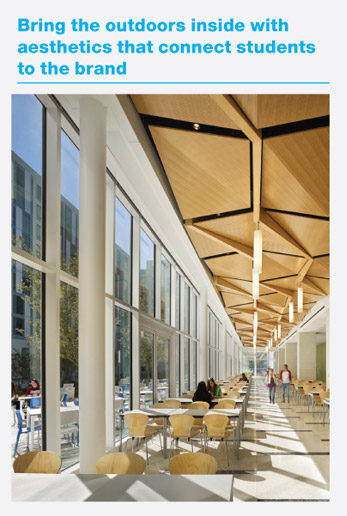
Figure 4. Spaces should visually connect students to natural light and views to daylight and nature. Design features and architecture of larger public areas offer an opportunity to express the institution’s brand.
Design Recommendation: Create a Legible, Functional Space that Supports Use of Technology
Student’s satisfaction with the facilities is strongly linked to their perceptions of facility aesthetics, legible spatial layout, and access to technology that supports learning and interaction. Use planning and space layout that enhances the overall legibility (ease of understanding and use) of the floor plan layout of the spaces within buildings (Figure 3).
There should be good visual access between important locations in the building and features outside the building that can act as landmarks for orientation and way finding. The spaces for learning, study and social interaction should be easy to locate, and their intention for use should be obvious—not ambiguous.
Design Recommendation: Connect Students to the Outdoors and to the Brand
Indoor spaces should be oriented to take advantage of natural light and create a visual connection to the natural outdoor environment (Figure 4). Sunlight, even filtered through a window, has been shown to improve mood. Offer circulation paths throughout the building that take people near windows for exposure to daylight and to outside views of nature. Design features within the building or other physical elements that express the mission and accomplishments of the school should be considered as part of the design of the space and build upon marketing efforts.
These Insights Demonstrate that Design Can Improve Student Learning Experience
In this pre-move assessment of learning spaces and the student experience, we found many connections between design and: quality of study, socializing, satisfaction with space and even decision to attend the school. We were able to identify specific design features that impact these outcomes and provide insights on how to improve spaces from perspective of improving the student experience.
In the second phase of this study, Knoll will compare assessments of interior space, furnishings and technology before and after the move to Farrell Hall, to reveal their impact on outcome measures such as academic performance and retention.
NOTE: The images shown within this paper are from various locations, used to illustrate the themes discussed. They are not specific to the Wake Forest University School of Business.
DOWNLOAD "Designing for a Quality Learning Experience" TO READ THE FULL PAPER







